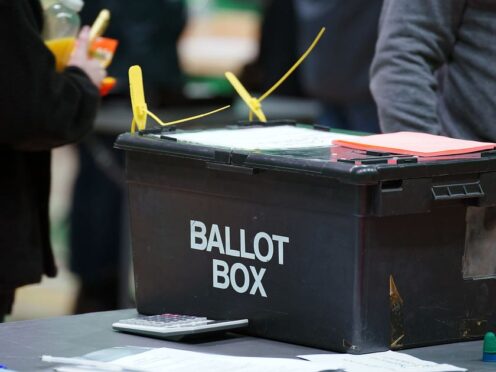Some 632,863 applications to vote were submitted on Tuesday, the last day to register before the General Election, Government figures show.
The number is just below the 659,666 applications that were submitted on the equivalent deadline day ahead of the 2019 general election.
People had until 11.59pm on June 18 to register to vote.
The number of applications submitted on Tuesday is the highest for a single day so far in 2024 and is nearly double the year’s previous high of 330,621 on June 13.

It means more than 2.7 million applications to vote were submitted from May 23, the first full day after Prime Minister Rishi Sunak called the General Election, to June 18.
Of the applications submitted on Tuesday, more than half were by people aged 34 and under, with 30% from 25 to 34-year-olds and 26% from those under 25.
Some 17% of applications were from 35 to 44-year-olds, 11% from 45 to 54-year-olds, 9% from 55 to 64-year-olds, 4% from 65 to 74-year-olds and 2% from people aged 75 and over.
These are broadly in line with the age breakdown for all the applications submitted since the General Election was called.
Applying to register to vote is not the same as being registered to vote.
You’ll need to bring photo ID to vote in person in the UK Parliamentary general election on 4 July.
It must be the original version and NOT a photocopy or photo of the ID.
Check if you have accepted ID, and apply for free voter ID if you don’t: https://t.co/8XLW3k96g0
— Electoral Commission (@ElectoralCommUK) June 13, 2024
The latest figures are likely to include instances of people submitting an application who are already on the electoral register or who are ineligible to vote.
All voters intending to cast a ballot in the General Election on July 4 will not only need to be registered but also show a form of photo identification at the polling station.
Not all types of photo ID will be accepted, but a passport, driving licence or blue badge are valid.
Anyone without the correct identification will need to apply for a voter authority certificate by 5pm on June 26, which can be done online at http://gov.uk/apply-for-photo-id-voter-authority-certificate.
❗ ✉️ If you live in England, Scotland or Wales and want to vote by post in the UK Parliamentary general election, you must apply today (19 June) by 5pm.
You can apply for a postal vote online.
Find out more here: https://t.co/y18b3FVynr
— Electoral Commission (@ElectoralCommUK) June 19, 2024
Photo ID rules were brought in as part of the Elections Act 2022, as the Government said they were necessary to combat the risk of in-person voter fraud.
The requirements were first enforced at last year’s local elections in England.
Meanwhile, applications to vote by post in the General Election need to be submitted by 5pm on Wednesday for people in England, Scotland and Wales.
The deadline for people in Northern Ireland to apply to vote by post has already passed.
